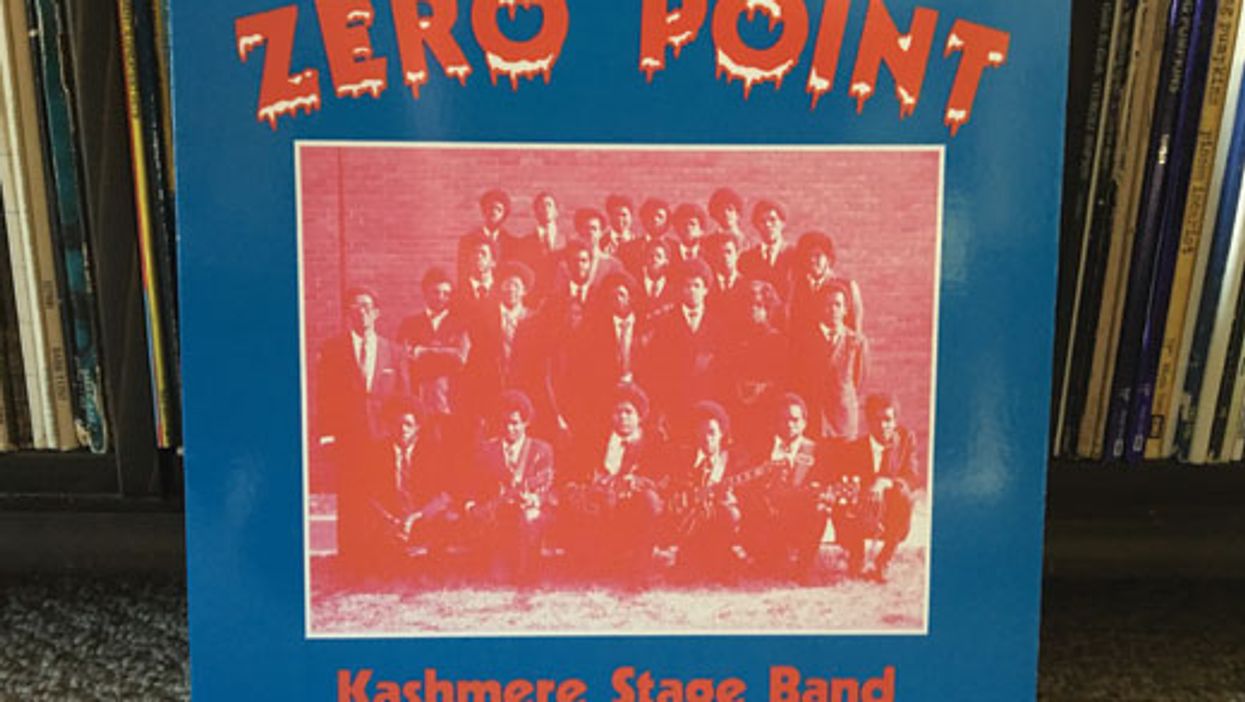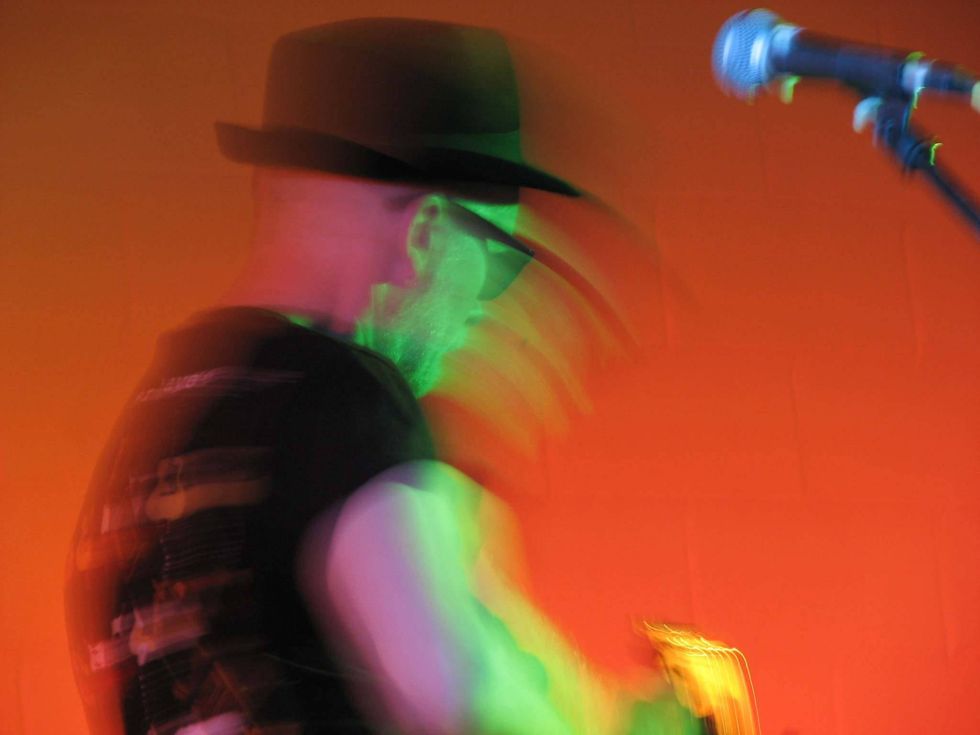I'd sit right behind the bench so the coach would feel guilty if my kid didn't play. The coach spent the game shouting at the players through his megaphone hands while thick veins popped out of his dangerously red neck. During time-outs, I'd hear him describing these super-complex, four-set offensive plays. A monkey locked in a room with a tuba had a better chance of nailing a Van Halen solo than those kids had of achieving anything this delusional coach was trying to impart. Maybe he should've dumbed it down for these children who couldn't remember to tie their shoes?
I thought of this coach recently while I was at PG staffer Tessa Jeffers' Halloween party. We were taking turns picking vinyl out of big stacks of records—the rule being that we spin the entire side of the chooser's album. (Abbey Road side two is my go-to). When Tessa's neighbor, Mike Tristan, pulled out an LP recorded in '72 by the Kashmere Stage Band, a group from a high school located in a predominantly black neighborhood in Houston, I thought I'd politely pretend to listen for 20 seconds then excuse myself and hide outside with the smokers until his turn was over. I imagined out of tune brass and Lawrence Welk arrangements. Turns out, it was shockingly good music full of deep-pocketed funk grooves.
When I was in high school, I'd been playing guitar for two or three years. I can't imagine making music at the time on the level of the '72 Kashmere Stage Band. If I practiced 10 hours a day for 12 months, I might have upgraded from unlistenable to terrible, but I couldn't hang with those kids. So how did this killer band happen?
There were probably some innately talented kids in that band, but what made them great was their music teacher, Conrad O. Johnson. “Prof" Johnson managed to inspire greatness in these kids—most of whom were what we would now call “at risk." They lived in a poor part of Houston, known for its high population of felons, and many came from single-parent homes. One KSB alumnus described himself and some of his bandmates as “thuggy" before they joined the Kashmere High School group.
The story goes that Johnson attended an Otis Redding concert in 1967 and was inspired to start this elite band for his students. He composed original funk songs for the group, dressed them in platform shoes and matching crushed-velvet suits, and got them moving with impeccably choreographed steps that would make James Brown take note. For a decade, in spite of constant lineup changes, KSB reigned in national high school band championships.
With a lot of work, most bands can learn to read what's written on a page, but Johnson instilled in his musicians an understanding of groove—the secret ingredient to great music. There's no formula for a deep groove: sometimes grooves lay back, sometimes they rush, sometimes they move, sometimes they are locked solidly in place. The only rule is: when a groove is right, you feel it. Social media is full of children playing wildly complicated music, but most of these performances are heavy on notes and light on feel. It's impressive as hell and makes us insecure about our own abilities, but the music rarely moves you emotionally because notes without groove and feel don't mean anything. It took me a long time to tune into the groove when I play, because for years I focused so intently on where I put my fingers that my peripheral vision was groove-blind.
Johnson told his students something I wish I had heard when I was their age: “You can do the right thing, for the right reason, with the right person, but if you do it at the wrong time, everything gets jacked up and twisted." Johnson got KSB to listen to each other, lock in, and move as a unit. They were so tight that you couldn't squeeze a Bible page between the kick and the bass.
KSB recorded eight albums, which are now coveted by collectors as well as hip-hop artists and DJs who sample KSB. The Warner Bros, Now-Again, and Kram labels have all released KSB's recordings. And Thunder Soul, a 2011 documentary, tells the band's story. The movie leaves you with plenty of feel-goodery and some moral takeaways, including:
• With the right guidance, kids can accomplish amazing things.
• We need to continue teaching and funding the arts.
• Above all, if you want to make music that leaves a mark, focus on the groove.




















